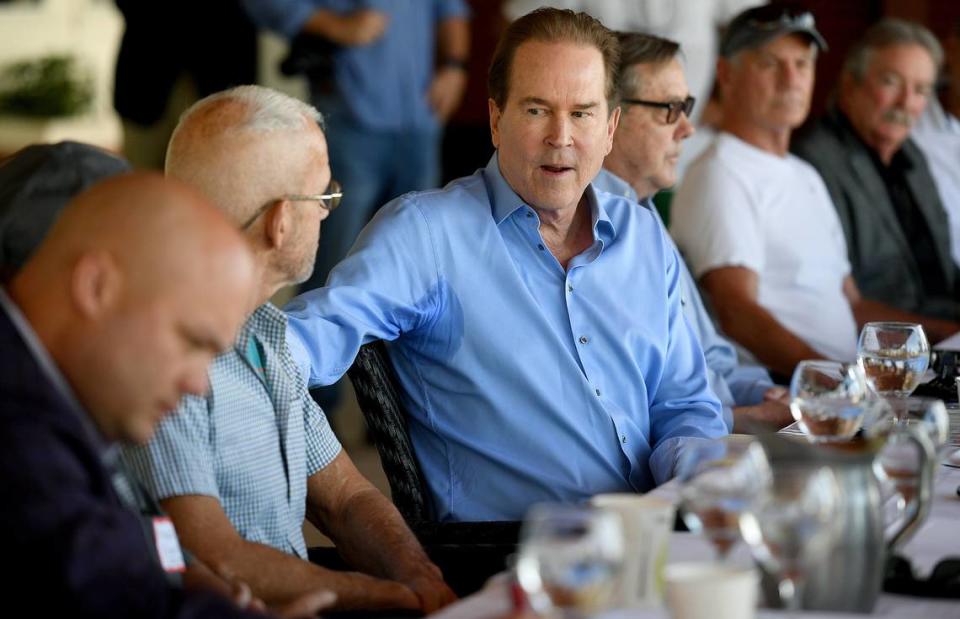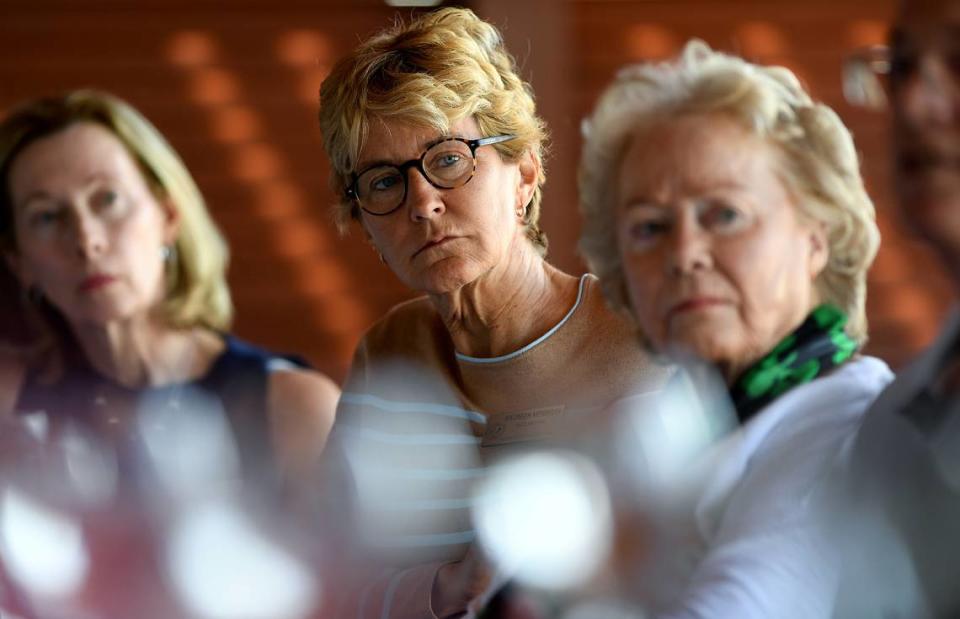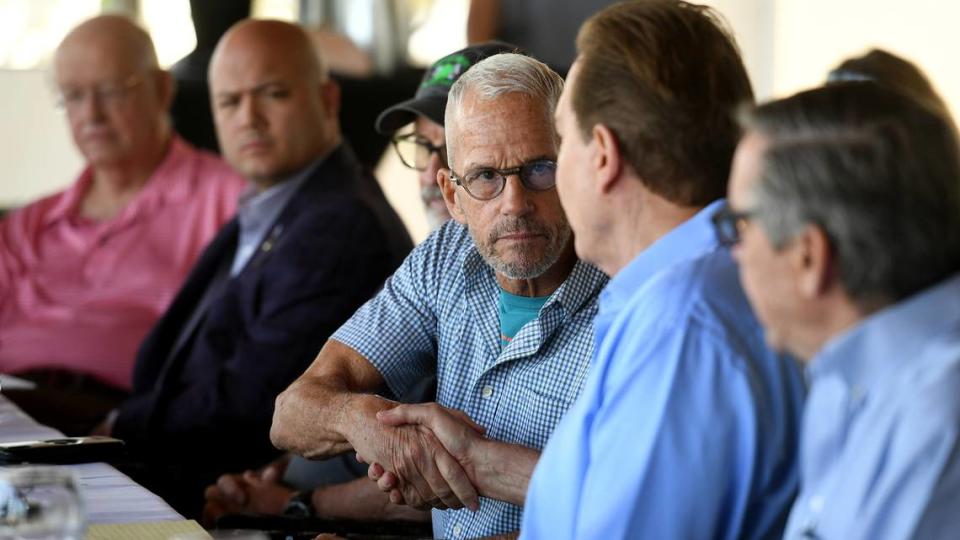What is the answer to Florida’s red tide problem? Local experts say it won’t be cheap
Local officials and water quality experts are calling for a renewed emphasis on infrastructure to reduce the frequency of harmful algae blooms like red tide.
Congressman Vern Buchanan led a red tide roundtable Friday to discuss the impact of the algae and brainstorm solutions. The group agreed that reducing stormwater runoff and wastewater spills could alleviate algae blooms.
Improvements to water infrastructure, such as the pipes that carry sewage, could produce substantial benefits to water quality. Old pipes and wastewater systems contribute to spills and leaks that harm local waterways.
“It’s all about nutrients — and we have proof,” said Sandy Gilbert, founder of the Solutions to Avoid Red Tide (START) organization.
Since October, a persistent bloom of red tide has plagued Southwest Florida, including Manatee County’s beaches on Anna Maria Island. Red tide, which is caused by a microscopic organism called Karenia brevis, can lead to widespread fish kills and cause respiratory issues for humans.
Buchanan started the discussion by highlighting the challenges that red tide can make for the region. Visitors and residents choose Florida for its environment, but red tide tends to keep people away from the beach.
In the past few weeks, Manatee County has removed more than 3 1/2 tons of dead fish that washed ashore.

Red tide threatens local water quality
“I can’t think of anything more important than water quality,” said Buchanan, R-Longboat Key. “Red tide has wreaked havoc on marine life, our waters and the many businesses that rely on Florida’s tourism-based economy.”
While several groups are researching the effects of red tide and how to mitigate its frequency, policymakers agree that the main goal should be the reduction of nutrients entering the water. Ed Chiles, a passionate water quality advocate, said reducing fertilizer use or preventing sewage overflows can help.
“It’s not one thing. It’s everything,” said Chiles, who leads the local All Clams on Deck initiative using clams to promote clean water. “It is what’s going on with wastewater treatment plants. It’s what going on in your yards.”
Chiles’ Beach House restaurant, 200 Gulf Drive in Bradenton Beach, hosted Friday’s roundtable discussion.

Nutrients feed algae, experts say
Studies have shown that red tide blooms grow stronger when K. brevis is fueled by nitrogen and phosphorus, which are common nutrients in sewage, fertilizer and stormwater runoff. Investing in infrastructure that collects those nutrients before entering Florida waterways is one way to clamp down on red tide, the roundtable concluded.
“We’re seeing some impacts that are very troubling,” said Ed Sherwood, executive director of the Tampa Bay Estuary Program, referring to local seagrass losses. “The work we need to do is really focused on improving our aging wastewater infrastructure, our stormwater and also looking at the contribution of emissions.”
Red tide is a naturally occurring phenomenon, but scientists say human activities and nutrient pollution tend to make the blooms worse.
“Fertilization is running off into the water, and it’s a big factor,” Buchanan said.

Buchanan backs infrastructure needs
Ron Huibers, chairman of the city of Holmes Beach’s Clean Water Committee, urged Buchanan to support local infrastructure needs.
Buchanan, who has previously pushed bills supporting red tide research across the finish line, said he supports using federal money for local projects that could reduce the frequency of harmful algae blooms.
“If you need infrastructure, I want to find a way to get that done,” Buchanan said. “I don’t care what it costs.
“There’s a lot of infrastructure that we can do. It’s going to be expensive, but it’s the right thing to do,” he added.
Manatee County Commissioner Kevin Van Ostenbridge also touted the county’s capital improvement plan, which includes over $1 billion toward projects that improve wastewater systems over the next five years.
The congressman said he hopes to have another proposal signed into law. Buchanan recently filed a bill that would allow states suffering from harmful algae blooms to qualify for disaster assistance from the Federal Emergency Management Agency.
Buchanan has successfully advocated for red tide funding before. In recent years, he has secured $8 million for red tide research and another $100 million to combat harmful algal blooms.





